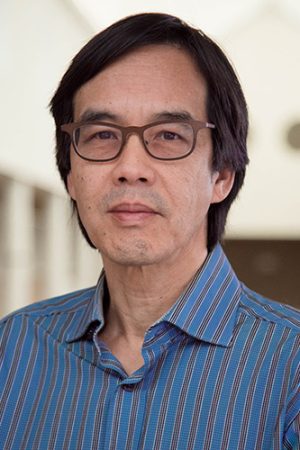Peter Wong

Peter Wong
Peter Wong is an Associate Professor of Architecture at the University of North Carolina-Charlotte, where he has taught architectural design, history, and theory since 1988. His scholarly contributions include a translation of Vittorio Gregotti’s treatise, Inside Architecture (w/ Francesca Zaccheo, MIT, 1996) and a critical account of Shanghai shikumen housing in the article “Chinese Puzzle” published in Diversity and Design (Routledge, 2015). These writings draw from research in urban housing, modernist building vocabulary, and the means by which architectural space is understood, interpreted, and defined. Currently, his work investigates spatial perception in domestic interior environments with the aid of eye-tracking hardware and software to reveal areas of visual attention.
Peter received his degrees from the University of Washington (BA 1981) and the University of Pennsylvania (MArch 1985) and is a licensed architect in the states of Pennsylvania and North Carolina. He has received design awards from the National Organization of Minority Architects (NOMA) and the Charlotte Chapter of the AIA. He teaches in both the graduate and undergraduate programs and is a contributing member in the School’s semester Rome, Italy program.
EXPLORE HIS RECENT WORK

Unkapani Upcycle: cultivating grassroots enterprise and urbanism in Istanbul is a paper resulting from a collaborative teaching research project with colleague Jeff Balmer and Turkish teaching collaborators Demet Mutman (Özyeğin University) and Bengü Uluengin (Bahcesehir University). The research and subsequent report investigates the topic of a more sustainable and equitable urbanism defined by social equity, community engagement, and unique practices centered on the salvage and reuse of materials and infrastructure.

Design Gaze: Spatial Attractors Using Eye Tracking Technology: The Research project conducted by Wong extends a multi-disciplinary design study begun in 2016. It constitutes the continuation of a SoA Faculty Interdisciplinary Research grant awarded in 2018, Vague Space: Tracing Eyes, Edges, and the Indeterminate Limits of the Architectural Interior. This second part of the study builds on the findings of the first by actively using design determinants derived from a survey using eye-tracking hardware and software.

Spatial Stories – 3 printed study of the space of Adolf Loos’s Haberfeld House. Wong’s publication is a collection of essays and models interrogating the meaning and use of contemporary architectural space. The collection is the result of student work from an advanced seminar coursework in Spring 2013. The premise of this class was to investigate the significance of the three-dimensional tradition of architectural form, taking into account its unique role in shaping space.